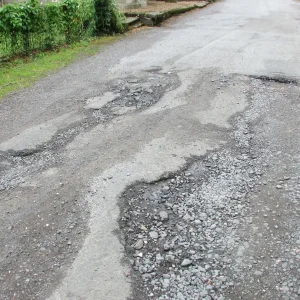Council road maintenance in England dropped by 45% in 2022/23 compared with five years before, according to RAC analysis of new government statistics.
The motoring organisation said this meant 3,366 fewer miles of road had received any kind of improvement work during the period.
According to the data, 764 miles of A roads were strengthened, resurfaced or preserved in 2022/23, a 37% decrease (458 miles) from 1,222 in 2017/2018, which meant only 4% of the A roads maintained by councils in England were worked on.
For minor roads listed as B, C, and unclassified, the numbers were 3,380 for 2022/23, compared with 6,288 five years before, a drop of 46% (2,908 miles).
Regionally, more than a third (35%) of the 158 roads authorities in the latest data failed to carry out any road surfacing, while six-in-10 (61%) did no preservation maintenance work.
Kent resurfaced the most miles of A roads out of all authorities, at 26 miles of its 502 mile-network (5%), while Staffordshire carried out the greatest amount of preservation work, treating 36 miles of its 412 miles of A roads (9%).
Gloucestershire resurfaced the greatest amount of minor roads, at 64 miles of its 3,066-mile network (2%), while Norfolk completed the most preservation work, treating 251 miles of 5,573 roads (4.5%).
RAC head of policy Simon Williams said: “These figures lay bare just how little resurfacing and life-extending preservation work councils have managed to carry out in the last financial year.
“We suspect this means road maintenance in England has reached a new low point – a sorry state of affairs considering how car-dependent the country is.
“It’s especially concerning to see that so few miles of A roads received any form of road maintenance last year when these important routes are used by millions of drivers every day. Meanwhile, our minor roads that are essential in connecting rural areas have received barely a crumb of the pie.”
Williams argued that highways authorities needed to take a ‘traffic light’ approach to road maintenance.
He said: “Roads in ‘green’ and ‘amber’ conditions should undergo preventative maintenance by filling potholes and carrying out the most appropriate surface dressing treatment between April and September. This will seal the roads against water and prevent cracking in the cold winter months.
“Roads deemed to be in ‘red’ condition need to be fully resurfaced, or strengthened, as no amount of preventative treatment will stop them from falling apart.”
Williams suggested that dropping road maintenance levels had contributed to drivers being nearly twice as likely to suffer a pothole-related breakdown than they were in 2006, and said that a government £8.3bn cash injection announced for road repairs over 11 years still would not nearly be enough for a long-term fix.
He said: “We believe a proportion of money raised through fuel duty should be ringfenced to give councils the certainty of additional dedicated roads maintenance funding for years to come.
“Otherwise, this serious, decades-long problem will continue, meaning more roads will literally crumble away. The longer this is left unaddressed, the bigger the eventual bill for councils.”





